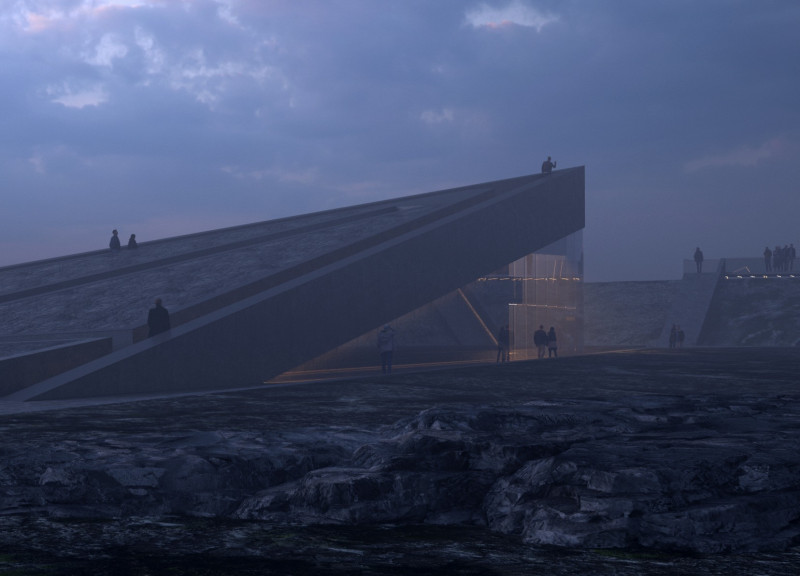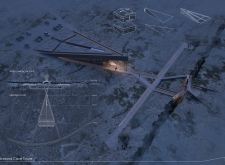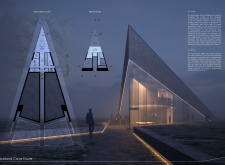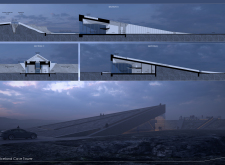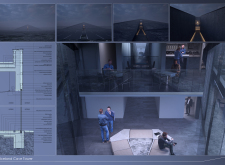5 key facts about this project
The Iceland Cave Tower is set in the unique landscape of Iceland, where the North American and Eurasian tectonic plates intersect. Serving as both a viewpoint and a landmark, the tower is designed to reflect the geological movements occurring in the area. The overall concept emphasizes the relationship between the building and the natural forces at work, integrating it into the surrounding terrain while providing visitors with an insightful perspective on the landscape.
Geometric Form and Positioning
The tower features a tetrahedral shape that interacts with the landscape's natural contours. Positioned on the European side, it aligns closely with the fault line between the tectonic plates. The pathways leading to the entrance mimic these geological fractures, enhancing the connection between architecture and the environment. This thoughtful positioning encourages visitors to engage with the geological context, as the building appears to grow organically from the land.
Materiality and Structure
Material choices play a significant role in the design and performance of the tower. Large-scale sintered stone cladding gives the building a sturdy exterior while also contributing to its visual appeal. Reinforced concrete forms the main structure, providing necessary strength and stability. Additional materials such as mineral wool thermal insulation and XPS thermal insulation enhance energy efficiency and comfort. Concrete slabs serve as the foundation for the tower, ensuring a solid and durable base.
Integration of Glazing
Large-scale structural glazing is a key feature of the design, allowing for an abundance of natural light inside. This extensive use of glass creates a visual connection between the interior and the outdoor landscape, offering panoramic views of the geological formations. Such transparency helps to dissolve the barriers between inside and outside, making visitors feel more connected to the environment surrounding them.
Bridging Geology
A glass bridge complements the tower, spanning the gap between the tectonic plates. The design of the bridge avoids reliance on the North American plate, ensuring stability as geological shifts occur. This careful engineering provides an elevated vantage point to observe the terrain below. The bridge enhances the visitor experience, allowing for a direct engagement with the landscape and its geological features, ultimately highlighting the natural dynamics of the area.
The tower's design incorporates large openings that invite nature inside, drawing visitors into an exploration of the striking Icelandic landscape and its unique geological history.


